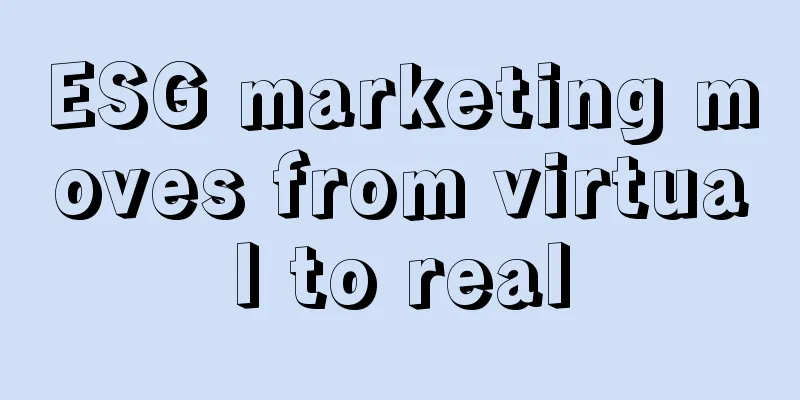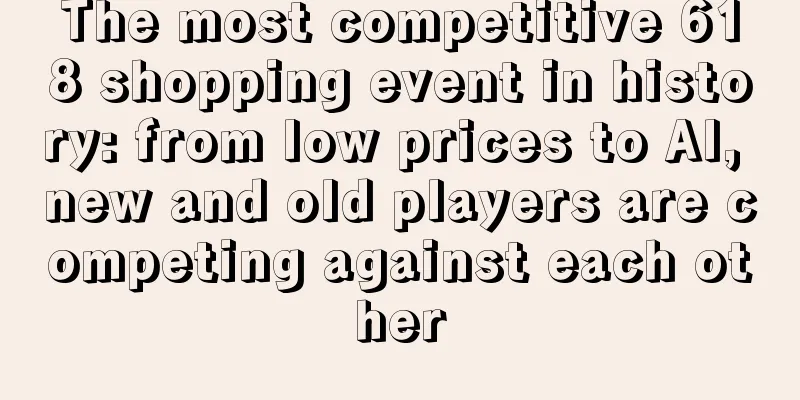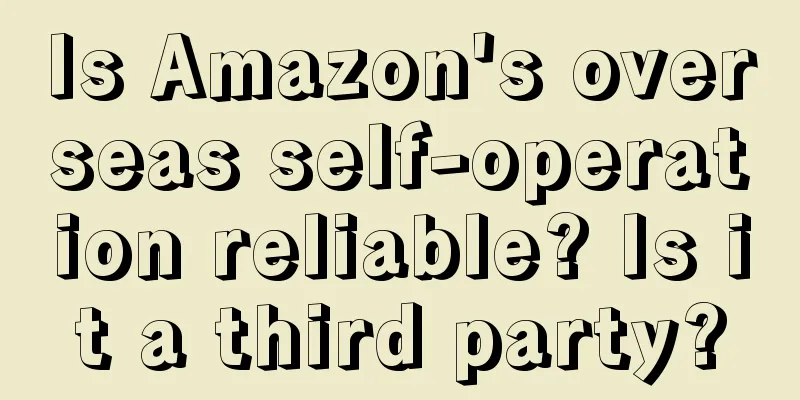ESG marketing moves from virtual to real

When a brand encounters a public relations crisis, it often releases a statement to resolve the issue. However, this approach is not always effective because if the response is inappropriate, it may lead to a loss of reputation, which is often difficult to make up for. This made me start to think, is the reason behind the crisis simply due to the negligence of the public relations and marketing departments? The answer is not so. for example: The Civil Aviation Administration of China releases public air transport customer service complaints every month. Before the public opinion outbreak of Cathay Pacific's "blanket incident", it was listed at the top of the complaint list of foreign airlines for 6 months in 2022 alone. However, no improvement was made until public opinion broke out, when the company symbolically fired the employees involved and made all the promises. A few days ago, a Cathay Pacific flight CX880 bound for Los Angeles, USA, encountered a technical failure. After the emergency brake before takeoff caused 11 people to be injured, the same flight was delayed again late at night on the 25th due to a water tank leak. Next time, do you dare to do it? It would be too hasty to simply attribute these problems to the negligence of employees. In fact, this long-term indifference to consumers is a violation of the principles of corporate social responsibility (ESG). The ESG concept requires companies to seriously consider and treat corporate social responsibility issues when making corporate plans and decisions, just like they treat shareholders and regulators. Each social issue represents different interest groups, which have the ability to have a long-term impact on the brand in various ways. Therefore, ESG is gradually developing from virtual to real. 1. What exactly is ESG?In 2004, the United Nations Environment Programme first proposed the ESG investment concept. This is actually a way to judge whether a company is good or not, but it is a little different from what we usually think. Usually we only look at how much money a company makes, but now we need to look at the company's performance in three aspects: environment, society, and self-management. Environmental mainly revolves around the degree to which a company takes environmental protection seriously. For example, for an industrial enterprise, you cannot just talk about how much material it contributes to the upstream and downstream, but also whether it uses less plastic and pays attention to energy conservation and emission reduction. Social refers to the company's attitude towards social issues, such as whether it respects workers' rights and whether it cares about community welfare. Governance refers to whether the company's own management is standardized, such as whether the board of directors is fair and whether senior management is transparent. Now, more and more people are beginning to use ESG standards to evaluate a brand or company, and ESG marketing is to truly apply a company's ESG strategy to marketing activities so that everyone can see the company's performance in the three aspects of environment, society and governance. Why do many leading companies begin to focus on ESG marketing? I think there are two reasons: First, changes in consumers, especially young people of Generation Z. I remember that in 1991, Regis McKenna put forward the concept of "marketing is everything, everything is marketing". He emphasized that technology, corporate characteristics, and meeting the real needs of consumers are the key to marketing. Looking back now, the importance of this sentence is greater than McKenna originally imagined. In the past, we would consider things very carefully before buying them, because we had so much information to refer to and could analyze and evaluate our purchase decisions from various angles. Therefore, when making decisions, we generally had more opinions than the previous generation. Young people of Generation Z have lived in a digital world since childhood. Unlike those of us who were born in the 1990s, 1980s, and 1970s, they were born into an Internet environment, with their phones always at hand and access to all kinds of information at any time. As a result, their way of thinking and shopping habits are very different from ours. First, they have already understood a product from various angles and will know very well why they want to buy it, including the production process; second, they are very confident in their purchase decisions. They are not trying to adapt to the market of us older generations, but rather, they want us to adapt to their needs. Moreover, the influence of Generation Z on these older generations is increasing. When they will soon control 27% of the world's income, we must learn how to market to this generation. Second, an evaluation of purchasing decisions and repurchase rates. There are so many commercial information and product choices nowadays, and people’s tolerance for mistakes is getting lower and lower. If a brand fails to meet the standards in any aspect, we will leave immediately and will not look back in the short term. For example, the recent "Aspartame causes cancer" controversy has resulted in a continuous decline in the index of sugar substitute stocks. Products such as Coke, Fanta, and Sprite have also been caught up in the "raw material public relations" dilemma. When we buy such products, we will definitely give priority to other similar products. Some time ago, brands such as Yuanqi Forest and Beibingyang announced that their products did not contain aspartame. As soon as this news came out, it attracted everyone's attention and online sales also increased accordingly. I saw a research conclusion in the "2023 China Charity Consumption Report" released by MKTforGOOD, which said that consumers' public opinion reactions to "charity brands" and "ordinary brands" are different. If a brand that has done public welfare has negative news, consumers are usually more tolerant and patient. They will consider the brand's past contributions to society to evaluate its social responsibility. If the problem is not very serious, people will choose to forgive or be willing to wait for the official response from the relevant department or the brand itself. But it’s different for ordinary brands. People don’t have any good impression of them. Instead, they think something is wrong. Maybe you didn’t care about consumers before, so people will choose to stay away from you. Therefore, we can clearly see the importance of ESG marketing to brands. This also explains why the marketing teams of large companies have begun to pay attention to ESG when they gradually involve various businesses. 2. So, how do big brands do it?After a round of research, we found that some brands want to work on the environment by making changes to raw materials, packaging, and products, thus forming a part of ESG. For example: Most (60%) of the clothes we wear are made of nylon and polyester. Although these two materials have a wide range of uses, due to their complex chemical structures, they are difficult to decompose naturally or be recycled, and can usually only be sold or burned. In May this year, lululemon and Australian startup Samsara Eco decided to work together to try to extract reusable nylon and polyester materials from discarded clothing. At the same time, lululemon also plans to provide financial support to Samsara's team and factory. They hope to process approximately 20,000 tons of plastic starting in 2024, which will greatly reduce energy consumption in the production process. Of course, this year they proposed a goal called "Be Planet", pledging to fully adopt sustainable products and solve end-of-consumer problems by 2030 to achieve a circular ecosystem. If this research and development is successful, they will be the first company in the world to do this; that is to say, this nylon and polyester recycling project is a key step in achieving their goals. They hope to achieve environmental governance in ESG by recycling raw materials, remaking them, and recycling them again. This is too rich. You may say that as a small brand, we cannot replicate this. Of course, I have researched some brands and tried to think about small but beautiful initiatives from the perspectives of “recycling” and “product recovery”. You may have heard of "carbon reduction", which means that we need to reduce the emission of greenhouse gases such as carbon dioxide; you should know that an important part of the circular economy is to trade items that are no longer used, which can play a big role in reducing carbon emissions. In this regard, the second-hand idle platform Zhuan Zhuan and the luxury e-commerce platform Redbulin have made attempts. They developed a "Circular Fashion and Environmental Protection Action" function in their own APP. Every time someone successfully consigns, resells, or recycles goods, buyers and sellers can see how much they have contributed to reducing carbon emissions. Take Redbubble as an example. Each second-hand clothing or accessory can reduce carbon emissions by 0.3 to 172 kilograms, and each second-hand bag can reduce carbon emissions by 0.5 to 12.7 kilograms. According to its official website, as of the end of last year, it has reduced carbon emissions by more than 409,834,29 kilograms. Of course, many brands such as Galanz, Jiedian, Miaojie, Mercury Home Textiles, Tuniu Travel, China Post, and Guazi Used Cars are also doing this in order to promote low-carbon strategies. Carbon marketing belongs to "long-termism", which may not be very noticeable to everyone; the strategy of sports brand Nike may give people an intuitive experience. In May this year, Nike built an environmentally friendly sports field in Yunnan. The special thing about it is that this sports field was built with old shoes, with the aim of encouraging rural girls to exercise more. As early as 2020, Nike began collecting old shoes that people no longer wanted, processing them into rubber particles, and then using these particles to build sports fields; they have used this method to build a sports field of about 1,000 square meters in Wuhan Biyun Primary School. Now these two projects (encouraging rural girls to exercise and giving old shoes new life) have been combined to become a project that not only provides supplies but also encourages everyone to exercise. Driven by Nike, students from 20 universities have donated their old shoes, which can be used to build sports fields after being processed. This provides rural girls with a place where they can run freely, especially for those girls who cannot participate in sports due to environmental restrictions. The playground will become a paradise for free running. In order to help clothing brands solve the problem of squeezing out inventory fabrics, the cross-border e-commerce platform SHEIN cooperated with the American sustainable fashion company Queen of Raw to recycle the stockpiled and wasted raw materials for secondary processing. Under this model, a new idea of reuse has also emerged. It is not difficult to see that everyone is formulating marketing strategies based on their own situation and around the overall ESG framework. 3. What is the core of using ESG for marketing?I think it is about finding a common language, reaching out to users, and establishing a sustainable narrative. Sociologist Zygmunt Bauman said: "You judge a society by the decency of living of the weakest." "Decency" just happens to have a corresponding term in Chinese, called "dignity." The whole sentence means: If the weakest people can live decently, then such a society is a good enough society. Brand marketing has developed from product positioning theory to the "user positioning theory" stage. In the past, people used brands to promote a belief, namely, "If you buy me, you will become a certain kind of person." Now everyone is a co-creator, and everyone can express their own emotions and opinions without the need for product mapping. This means that in addition to the most basic use value of objects, a new way of communication must be found to ensure equality; how to make one party pay not just out of moral pressure, but also so that the other party can maintain dignity and decency when receiving help is a question that marketing must consider. For example: In the past, we would label people with autism and children in mountainous areas as “weak” and hope that others would help them out of sympathy. Now, activities such as buying paintings for one yuan and poetry POS machines have opened up new avenues, allowing autistic patients and children in mountainous areas to display their talents and create works that are loved by the public. Yes, their perspective on the world, their innocence, simplicity and imagination can all serve as a source of inspiration to create works of art that can heal the public. In this way, they are no longer just "weaklings", they also become creators, who can not only get a better life through their talents, but also experience the joy and confidence of success. This is our current goal, to make helping and being helped an equal relationship, such as the relationship between creators and buyers. Think about it, isn't it? This is also part of the ESG marketing strategy insight. 4. How should brands formulate ESG marketing strategies?I think there are three keys: 1. Product-basedWhen you don’t know what to do, the best way is to forget about business and return to the first principles. Recently, I observed that in the consumer sector, a milk brand called “Asahi Vipshop” in the coffee industry is practicing a “circular farming” story, which is very interesting. In 2003, in order to improve the quality of the land, some people in Shandong set up a company together with the Asahi Group and gave the land a rest for five years; later, they invited Japanese cattle breeding experts to take charge of cattle breeding, and thus established an agricultural and animal husbandry park. In 2016, the brand was bought by a large agricultural company in China, New Hope Group. In 2021, Asahi Vipshop has become a different company. They began to emphasize "circular farming, natural deliciousness", and mainly sell high-quality milk and organic fruits and vegetables. Looking at their process from its founding to now, you can feel that this brand is absolutely linked to the word "environmental protection". In fact, all of Asahi Vipshop’s product positioning and marketing activities are based on the core concept of “circular farming, natural deliciousness”. For example, Asahi Vipshop’s buttermilk is produced from its own ranch, and organic vegetables are grown on their own farm; for another example, the product packaging and matching spoons are all made of biodegradable materials. Some people may wonder, what can we get from such a cycle of farming? I think if you enjoy the gifts of nature, time will give you a different answer one day. 2. Don’t be superficialWhen we look at it from the perspective of social responsibility, every company is a part of society and should contribute its own strength and resources to do as much as possible in the areas of environmental protection, social and governance, especially those that are in line with national plans. The more we do, the better. But from a marketing perspective, companies need to be smarter. They need to choose things that are closely related to themselves and in line with their long-term strategies, and then use marketing and communication to let more people know. After all, doing so can not only fulfill social responsibilities, but also help enhance brand image, which is a win-win situation. I see that many listed companies are now developing ESG (environmental protection, social, and governance) strategies, but most people are still just making reports and writing white papers without taking any actual action. Now is not the time to just talk about big principles. The three aspects now have very detailed divisions. Companies only need to find the segment they should pay most attention to and then put it into practice. For example: If a company mainly wants to tell human stories, they can formulate the main marketing strategy into a 3-5 year long-term plan, with a big theme every year and small themes every month. This can ensure the continuity of content and allow consumers to have a continuous understanding of the brand. You must not follow one theme today and that theme tomorrow, otherwise consumers will not understand which aspect of ESG you are focusing on. Moreover, if a brand cannot take continuous action on this major theme, it will not be able to gain long-term benefits from it. 3. Solve practical problemsI personally feel that I have done a good job over the years. ESG-related events include the “Ice Bucket Challenge, Earth Hour, Ant Forest, and Tencent’s 1 Yuan Painting Purchase.” These four activities represent three forms. Ant is a continuous public welfare product design, Earth Hour is an IP creation, and Ice Bucket Hour is a very successful campaign. From these cases, I realized that in order to promote an event well and build a brand with long-term and wide influence, the brand must first have a dual focus (project and population); secondly, ESG marketing must be treated as a product and an IP. Simply put, which people and which problems do you want to solve? Instead of talking about love, dedication, and charity in general, you need to take concrete actions. Abstract ideas are hard to impress consumers. You need to love specific people. Here is a simple example: Since 2018, P&G has been laying the groundwork for brands such as Safeguard, Head & Shoulders, and Oral in posters around the theme of "love." Mother's Day in 2019, "Mom's Salary" in 2020, "Happy Mom Academy, Love Can Overcome Prejudice" in 2021, and "As Long as You Go on Stage, You Must Be Beautiful" in 2022, the theme of "love" has been used for five consecutive years. If we put this theme into practice in the next five years, does it seem natural? Therefore, ESG marketing is moving from virtual to real, thereby maximizing the brand life cycle. Overall: Find the main thread and love specific people. What’s important is not how good the white paper looks, but what problems the brand is actually solving. In the process of solving the problems, think about what narrative method to use to express them completely. Author: Wang Zhiyuan Source: WeChat public account "Wang Zhiyuan (ID: 878436)" |
>>: 6 steps to teach you how to activate a "dead" group in your private domain!
Recommend
How can Amazon sellers avoid being copied by others? What are the Amazon anti-copycat techniques?
Amazon has attracted countless sellers to open sto...
How can a public account increase followers? What are the ideas and methods for increasing followers?
In the era of short videos, it has become very eas...
Who killed Google Search?
This is the story of how Google Search died. Throu...
Can Amazon see product sales? How can I increase sales?
With the rapid development of e-commerce, Amazon, ...
LTV calculation method and application
User life cycle is a concept that every product ne...
What are the rules for scoring product information on DHgate? What does it include?
In order to improve the quality of product informa...
DeepSeek Gold Rush: Earning a million a day, over 100 million in 20 days, who is being ripped off?
"The DeepSeek business boom brings both oppor...
Does Amazon need to prepare the goods? How many months does it usually take?
If a product is out of stock on Amazon, it must be...
What does a one-time credit card mean? How do I apply for a one-time credit card?
With the rapid development of financial technology...
Pursuing cost-effectiveness does not mean consumption downgrade
Nowadays, everyone is calling for consumption down...
Is it tiring for girls to do cross-border e-commerce? How to do cross-border e-commerce well?
Now, not only merchants are focusing on cross-bord...
Amazon holds Prime members' early access day to save sluggish sales
In order to boost sales, Amazon has a new way. Thi...
Which platform is better for cross-border independent stations? What platforms are there?
When it comes to cross-border e-commerce, I believ...
Are netizens all rich people who have coupons but don’t use them?
When you open a mobile shopping app, you will find...
The story of the snail noodle stall owner's rise to fame: a "Oh" resounded across Douyin, tens of millions of likes, and millions of followers
This article introduces Niu Fuxiang's experien...









